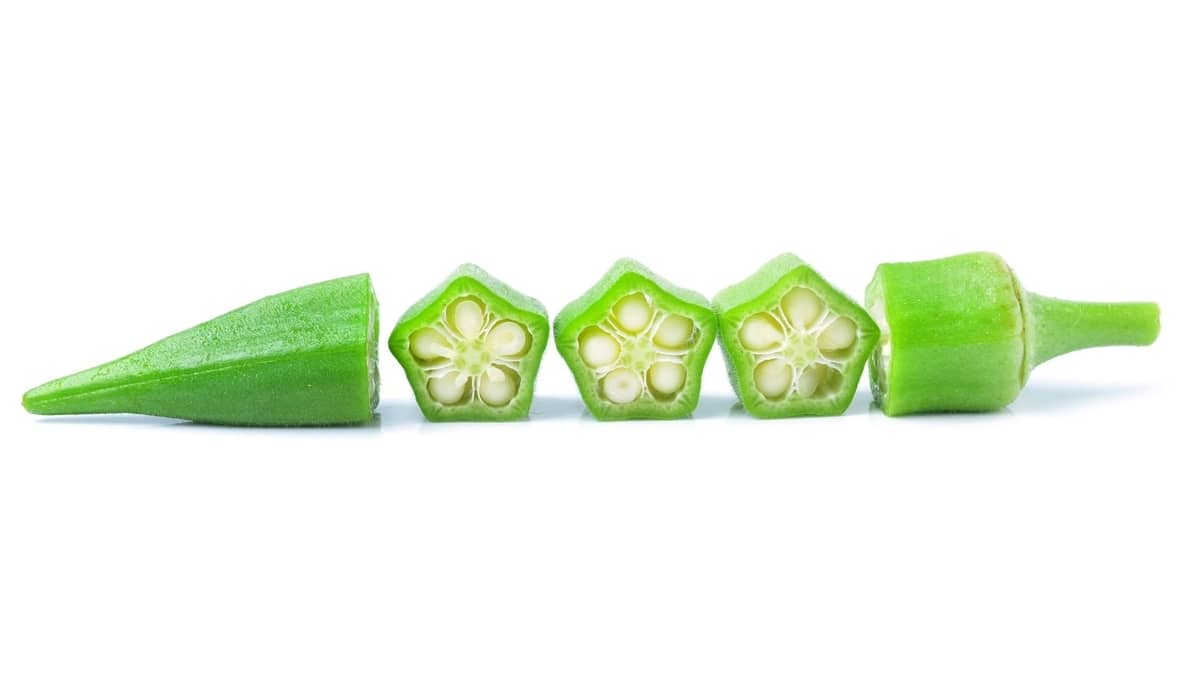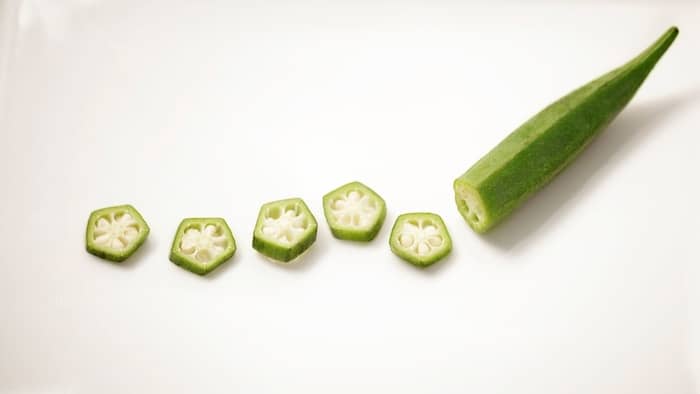Okra is packed with antioxidants, fiber, minerals, and vitamins. It’s no wonder you’d like to give your cat some, but can cats eat okra?
If you want to add plant-based snacks to your cat’s diet, you should choose vegetables and fruits that will improve their health. Because cats are strict carnivores, you need to prepare any vegetables you feed them properly.
IMPORTANT: At stuffaboutcats.com, we regularly consult with licensed veterinarians and other industry experts. However, the information found on stuffaboutcats.com should not be viewed as veterinary advice. We do our best to help you better understand your cats, but the information on this blog is not a substitute for veterinary guidance.
Can cats eat okra? The short answer is yes!
This article covers what you need to know about safely preparing okra for your cats, how it affects their health, and I give you some ideas to add it to their diet in a meal or as a snack.
Can Cats Eat Okra? Preparing It for Them!
Okra isn’t toxic for cats, and they can occasionally eat it in small snack-sized portions.
I don’t recommend giving your cat raw okra, but it’s best to blend it into a puree if you really want to. Your cat will digest raw okra more easily if it’s blended.
Cooked okra is easier to digest. Before cooking it, you should wash it under running water to ensure that all harmful chemicals on it are removed. You can cook okra for your cat following one of these methods:
Steaming okra
To steam okra, you need to place it in a steaming basket over approximately 2″ of boiling water. Keep it covered for about 5 minutes until it’s tender.
Make sure it’s cooled completely before feeding it to your cat.
Sautéing okra
You can saute okra in any oil that’s safe for cats to eat, like fish oil, olive oil, or coconut oil.
Start by heating 2 tablespoons of oil over medium-high heat. Add the okra and cook it for about 4 minutes until it’s bright green.
Let it cool before serving it to your cat.
While cooking okra for your cat, you should never add salt. If you’d like to flavor it with non-toxic herbs, only do so after you’ve tested your cat’s reaction to it.
You should start with a tiny piece of okra when you’re first introducing it to your cat. If they don’t experience any issues, you can slowly increase the portion size.
The Health Benefits Of Feeding Okra To Cats
Okra is gaining more popularity among cat owners than ever before! It’s a healthy, nutritious vegetable that’s perfect to feed your cats during the summer and spring months.
Health benefits of okra
-
Improves digestive function
Cats follow a diet high in protein and need to eat about 10% fruits or vegetables to up their fiber intake.
Okra has soluble and insoluble fibers, making it an excellent source of dietary fiber. Insoluble fiber is harder to digest but bulks up stool. This means your cat will have more frequent bowel movements.
Soluble fiber provides your cat’s gut with essential microbiota that helps prevent digestive issues.
-
Lowers blood sugar levels
As the insoluble fiber moves through your cat’s digestive system, it absorbs sugars in the digestive tract. This absorption lowers and stabilizes blood sugar levels.
-
Prevents cholesterol
Okra is made from a gel-like substance called mucilage.
Mucilage binds to cholesterol when digested and carries it out of your cat’s body in their stool. This process effectively stabilizes cholesterol levels and prevents cholesterol-related diseases.
-
Help with weight-loss
If your kitty is on their way to obesity, okra can help them lose weight. Because it contains insoluble fiber, it creates a feeling of fullness for longer. Your cat’s craving to keep eating will be curbed.
How To Add Okra To Your Cat’s Diet
Okra is not meant to replace meals. You also shouldn’t give it to your cat every day. Two medium-sized okra stalks twice per week is enough for an adult cat.
Here are some ideas to add okra to your cat’s diet:
Sun-dried okra treats
If your cat likes crunchy snacks, you can make dehydrated okra snacks for them. To sun-dry okra, you first need to cut the okra stalks in half and lay them cut side up in trays. You should then cover the tray with a screen and place it in the sun.
It takes between 3 and 7 days for okra to completely dehydrate in the sun. You should choose sunny days with a light breeze for the fastest drying time.
Okra yogurt
Cat-safe yogurt is a delicious treat that you can easily infuse with okra. If you blend okra into a liquid, you can simply add it to your cat’s yogurt.
Okra cubes
If you like making wet cat food at home, you can cut the okra stalks into cube-like shapes and add them to your wet food mix.
I recommend sauteing the okra in oil that complements the wet food you’re making. If you’re making wet food with fish as the main ingredient, you can use fish oil to saute the okra. Olive and coconut oil will work well with most meats.
In Ending
Okra is one of the best vegetables to feed your cat, however not every cat’s taste. If you prepare it properly, it poses little to no risk to your cat’s health and benefits them all the way. The secret to feeding your cat okra is to start small, be patient, and follow your cat’s lead. If they really don’t like eating okra, disregard the idea.
I hope you found this article useful. You can ask any questions about feeding your cat okra in the comments for me to answer!
Read more about Super Seaweed Diet: Can Cats Eat Nori?
FAQs
What is the healthiest food for cats?
Meat, fish, and poultry are the healthiest foods to feed your cat. These keep their reproductive system healthy, heart strong, and eyesight impeccable.
Veterinarian-certified cat food is an excellent source of the nutrients your cat needs, but you can also feed them human food when prepared right.
What are cats' favorite human food?
Most cats aren't picky eaters. If you want to feed them human food, you can't go wrong with cooked pork, beef, chicken, salmon, and tuna. You can also serve them yogurt, oatmeal, or ice cream as an occasional treat!


